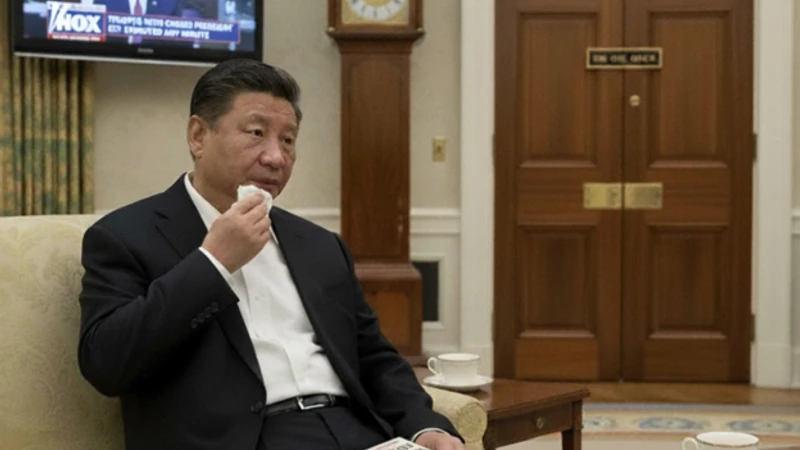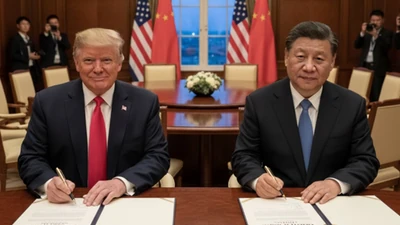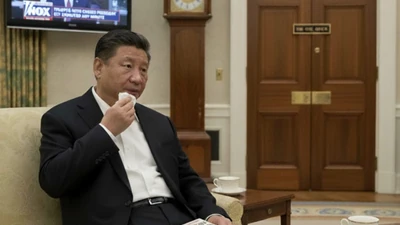It’s been one of those weeks where markets, politics, and policy all grabbed the same microphone. Investors barely caught their breath between a strong market rally, renewed energy sector momentum, and Washington’s newest headline: the White House upgrade and the announcement that President Trump will meet with China’s Xi Jinping next week in South Korea.
If you’re a Republican investor, this week told a clear story — America’s economic engine is revving, and the next chapter will be written in Asia.
The White House Tightens the Bolts
There’s a different rhythm coming out of Washington right now — less bureaucratic fog, more executive muscle. The latest White House moves signal a tightening focus on domestic strength: energy independence, reshoring manufacturing, and a sterner trade posture.
That’s not just political theater — markets are noticing. Energy and industrial stocks caught a tailwind this week as new sanctions and trade guardrails reminded the world that “Made in America” is more than a slogan. It’s becoming a strategy.
For investors who align with the America-first economic view, this means the next cycle may favor companies with a domestic backbone — those tied to infrastructure, logistics, defense, and strategic materials.
The Markets Took the Hint
Stocks rallied modestly this week. The S&P 500 and Dow Jones both climbed as earnings came in mostly better than expected. Gold, after an impressive run, finally took a breather — a small dip signaling that investors are relaxing a bit about near-term risk.
But don’t mistake calm for complacency. Behind the curtain, traders are already positioning for what could be a defining moment: next week’s Trump-Xi meeting in South Korea.
That single conversation has the potential to ripple across commodities, tech, and global manufacturing.
China Next Week: Opportunity Wrapped in Risk
Here’s what’s at stake: the U.S. and China are circling a new phase of trade diplomacy. Xi Jinping just outlined a plan to boost China’s domestic consumption and self-reliance — an indirect acknowledgment that foreign investment and export growth can’t carry them forever.
Meanwhile, Trump’s economic team has been reinforcing tariffs and export restrictions while courting allies to build a regional manufacturing bloc that reduces dependence on Beijing.
Put simply: the two largest economies are preparing to renegotiate the terms of global trade — again.
For Republican investors, that’s not a threat; it’s a roadmap. Every policy that pushes production closer to home means stronger fundamentals for U.S. energy, industrial, and defense sectors. Every tariff discussion is another reason to own domestic supply-chain winners.
What to Watch Next Week
- Language, not just headlines. Pay close attention to the tone of the Trump-Xi meeting — words like “productive”, “constructive”, or “framework” could signal relief for markets. Anything colder, and volatility spikes.
- Energy markets. If trade talks lean cooperative, oil could pull back. If not, expect another push higher as geopolitical risk premiums rise.
- Manufacturing plays. Firms tied to U.S. reshoring — construction materials, infrastructure tech, advanced manufacturing — stand to benefit either way.
The Big Picture
This week reminded investors that Washington’s posture matters as much as Wall Street’s charts. The policy tide has turned toward strength at home and leverage abroad — a classic conservative framework that rewards companies building, producing, and securing the future here in America.
Next week’s meeting in South Korea will test that framework on the global stage. But make no mistake: the markets are already voting. They’re betting on America’s resurgence — not just politically, but economically.
So, yes — what a week. But the real story may start next Thursday, when two superpowers sit down, and the next decade of trade and investment begins to take shape.











